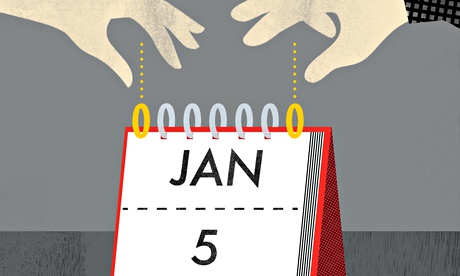Repeat after me: the Australian economy is not like a household budget
Our political and economic thinking has been warped by bad analogies to the point where we can’t see the real economy. The Abbott government is happy to play along

To prosecute its economic agenda, the Abbott government has relied on the constant repetition of economic myths. I’ve previously dealt with the myths of the budget emergency, the debt crisis and the endlessly repeated lie that the carbon tax was wrecking the economy – but these are only the most obvious myths and not necessarily the most important.
This week, Mathias Cormann repeated one of the other great myths of modern government financing, saying that it was “unfair to rob our children and grandchildren of their opportunities [in order] to pay for today’s lifestyle”.
The suggestion that future generations will have a reduced standard of living because of our government debt needs some unpacking.
What is it that limits the standard of living of people in 2030? It’s the goods and services that those people can produce. Goods and services cannot be sent back in time in order to pay for past spending. The standard of living of people in 2030 will be a factor of the number of workers and their productivity, not how much debt their government carries from the past. So where does government debt fit in?
As I’ve explained elsewhere, the finances of a sovereign government with its own fiat currency bear absolutely no resemblance to the finances of a household or a business. The federal government can create money. They don’t create all of the money that they need for all their expenses because that would cause out-of-control inflation.
The obvious conclusion to be drawn from these two uncontroversial facts is that taxation and borrowing are not the limiting factors on government expenditure, inflation is. Acknowledging this completely turns the mainstream commentary on government financing on its head.
The federal government does not need anybody else’s money in the form of taxation or borrowing in order to spend. They can create money. The reason they tax and borrow is to take money out of the economy so that their spending does not cause inflation or affect official interest rates. In other words, taxation and government debt are tools for economic management, not for revenue raising.
You may have to sit with all this for a moment and calm the voice in your head that is telling you it can’t possibly be true. Our political and economic thinking has been so thoroughly colonised by the finance industry that we often find it difficult to see the real economy. The real economy is the labour of workers combined with capital and land to produce goods and services.
How did the massive postwar government debts impact on the lives of people living in the 1950s and 60s? It didn’t. These are often referred to as the “golden years” where inequality fell and the standard of living rose at a dramatic pace. Could the workers in the postwar years send their goods and services back in time to support or pay for the war effort? Of course not, it’s a ludicrous proposition. Abbott and Hockey’s suggestion that future generations will suffer because of today’s government spending is just as ludicrous.
The only way in the real economy that future generations can suffer because of today’s government debt is if the government raises taxes or cuts spending in order to repay the debt and this causes higher unemployment. This is never necessary and governments who advocate this (like the Abbott government) have fallen prey to household finance analogies.
While there is spare capacity in the economy, inflation risk is low and there is room for greater government expenditure. One simplistic measure of spare capacity is unemployment. While there is excess unemployment there is room for more (targeted) government expenditure. In other words, sovereign governments have the capacity toalways maintain low levels of unemployment if they use inflation as their expenditure cap rather than taxes and borrowing.
If unemployment is the only price future generations pay for today’s government debt and the government can always lower unemployment by more spending, what’s the impact on future generations of government debt? None. Why then don’t we just go on a massive spending spree and have huge debts? Because spending beyond the productive capacity of the real economy would cause inflation.
The costs of too much government expenditure are felt immediately afterwards in the form of inflation and are not borne by future generations.
Hopefully now you can see the full picture. Government expenditure today is not limited by taxation or borrowing but by inflation risk. Government expenditure in 2030 will not be limited by taxation, borrowing or previous debt but by inflation risk. When you’re first presented with these facts it can seem like a magic pudding or a perpetual motion machine but that’s just because we’re used to thinking about finances from a household or business perspective.
National governments with their own currency bear absolutely no resemblance to a household or a business. All of the frequently used analogies give a distorted picture of the reality of government finances. To get a clear picture you need to peel back all the layers of finance speak and look at the real economy.
There are many important conversations and debates we should be having about government finances, the role of government, productivity, consumption and leisure. We cannot have them while the government and media commentators perpetuate myths about how our economy actually functions. Ultimately the material standard of living of future generations is going to depend on the productivity of workers and on a safe environment and climate. Now there’s a policy conversation worth having.





